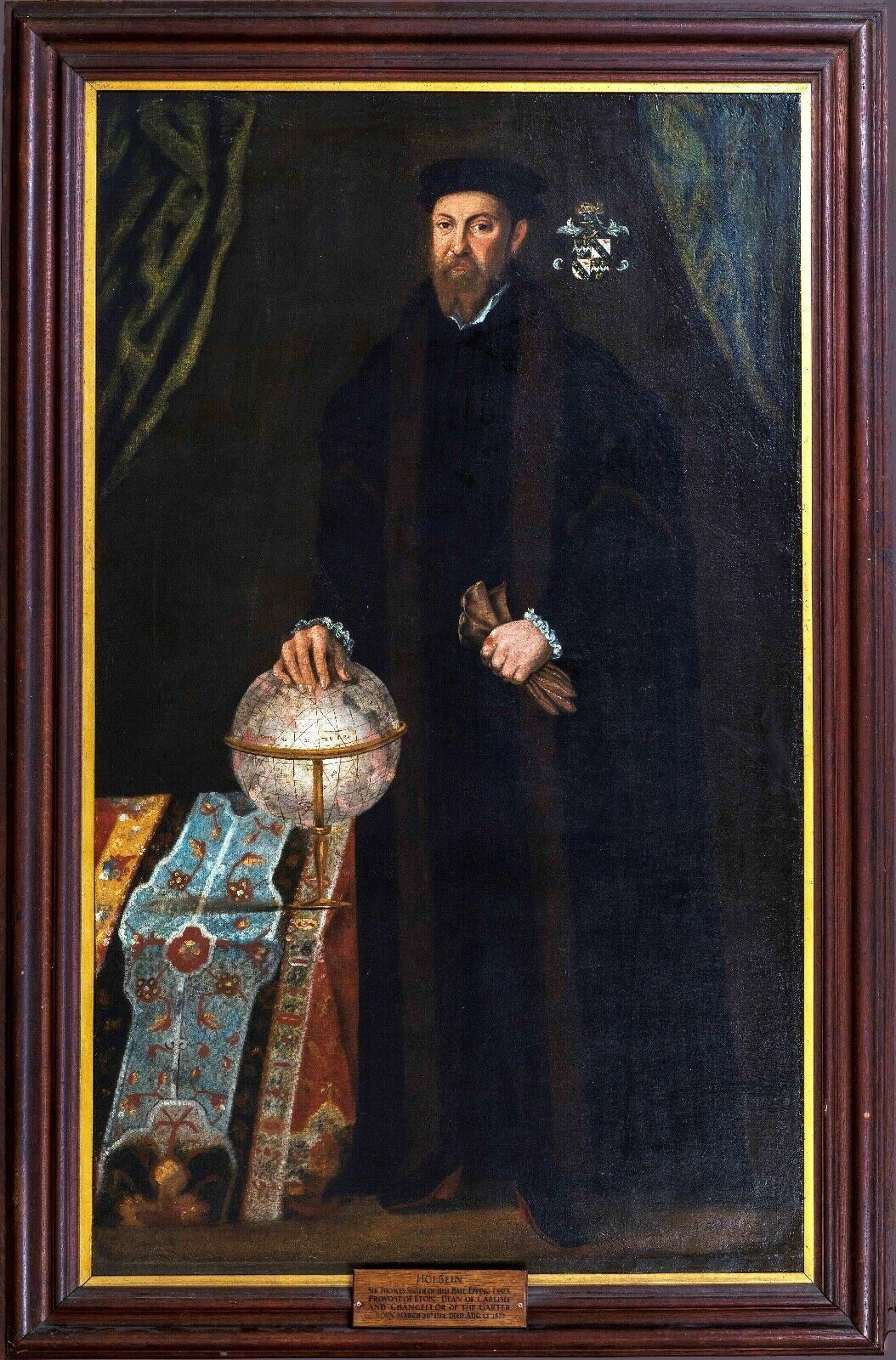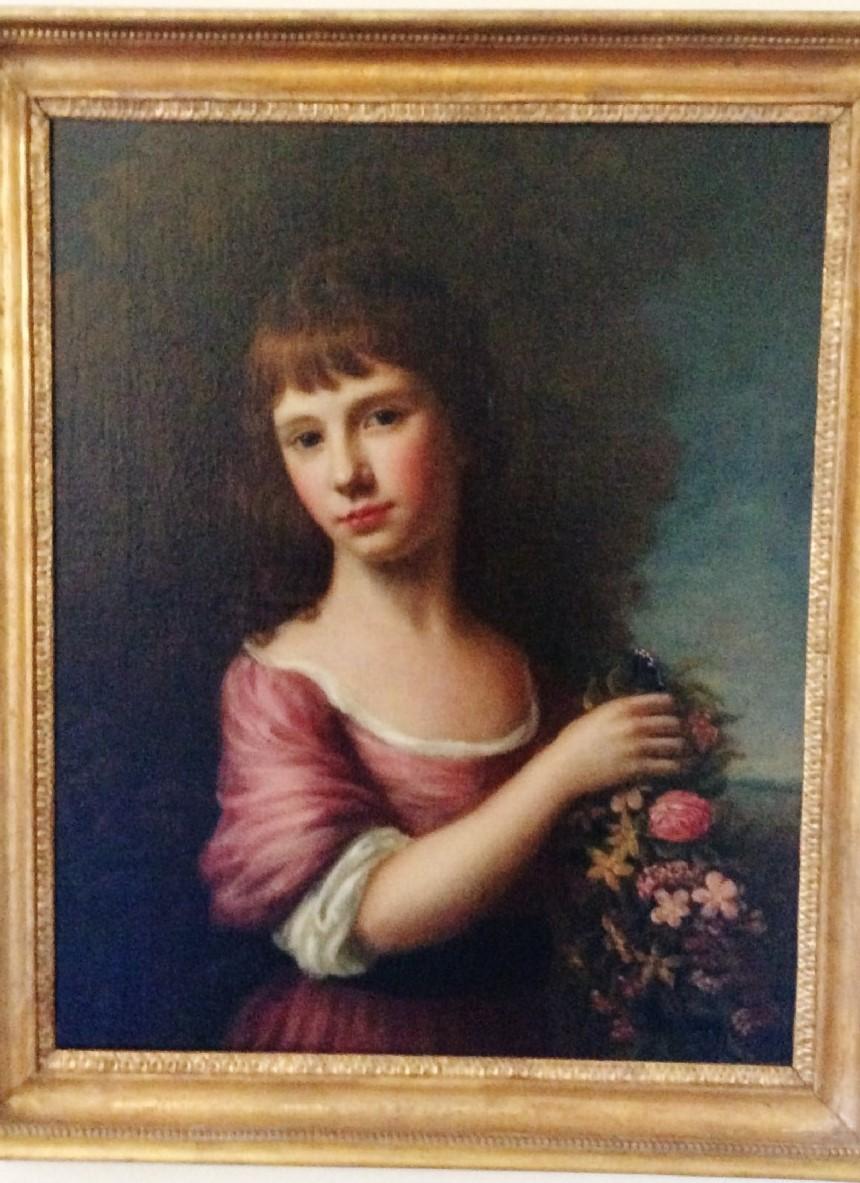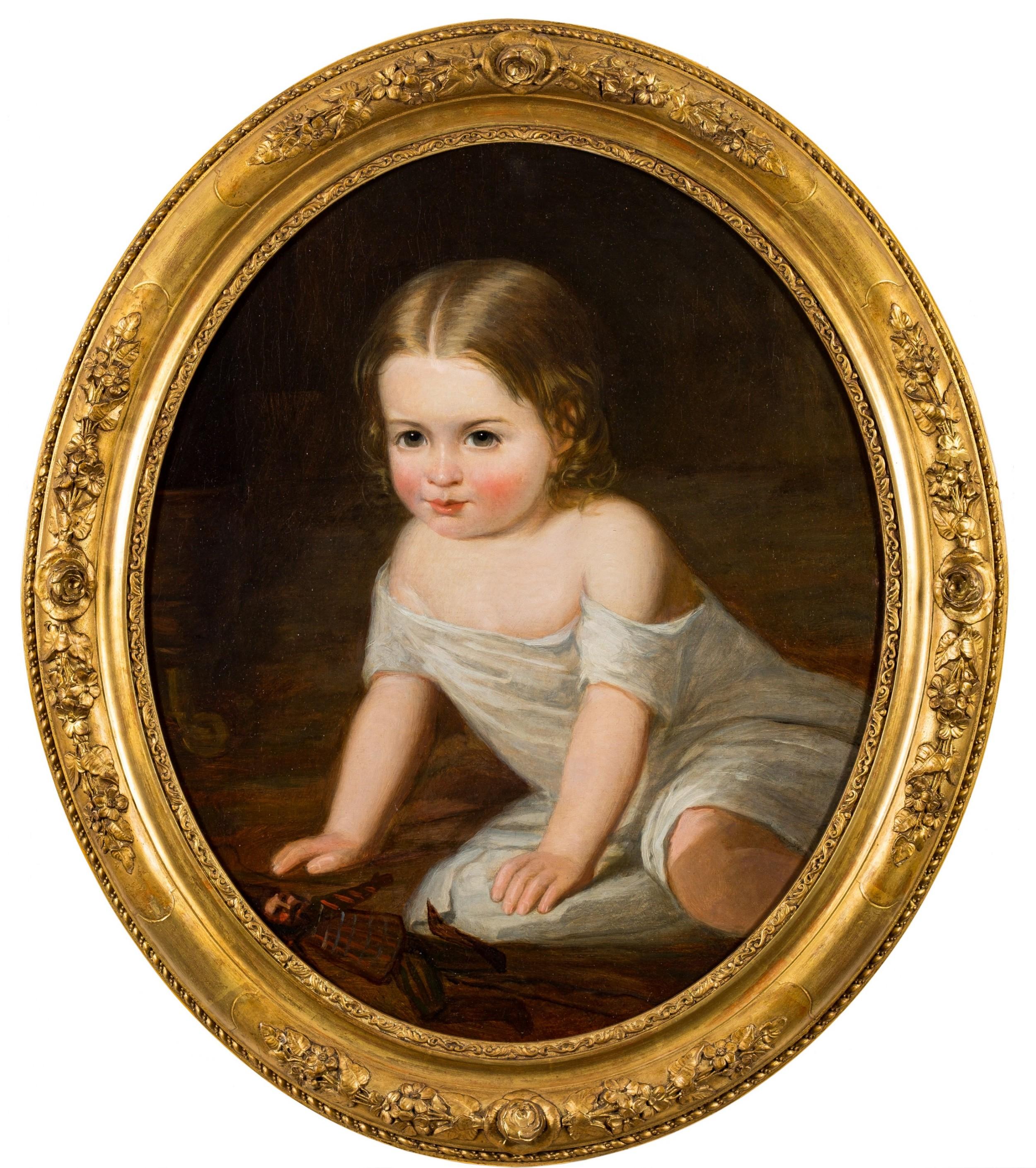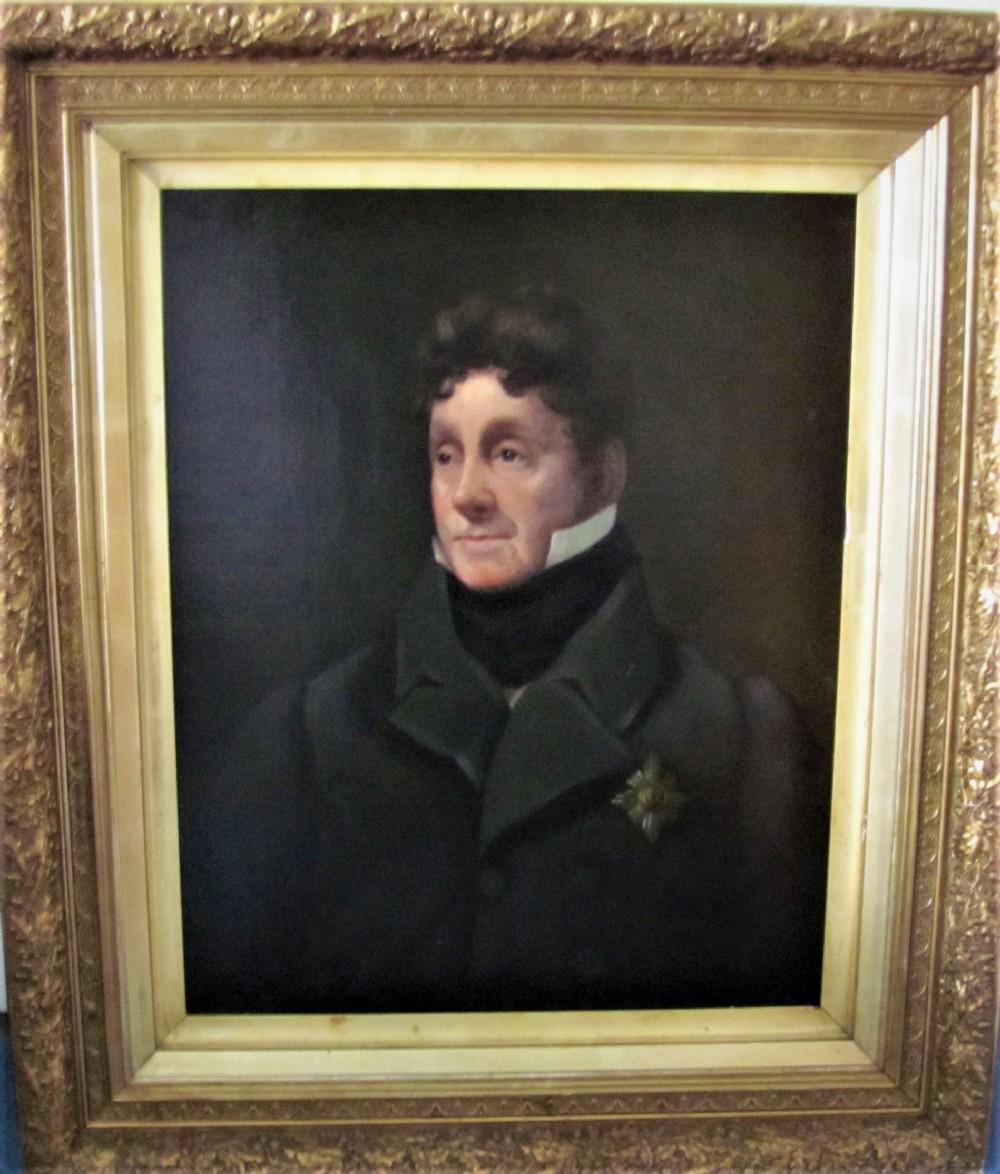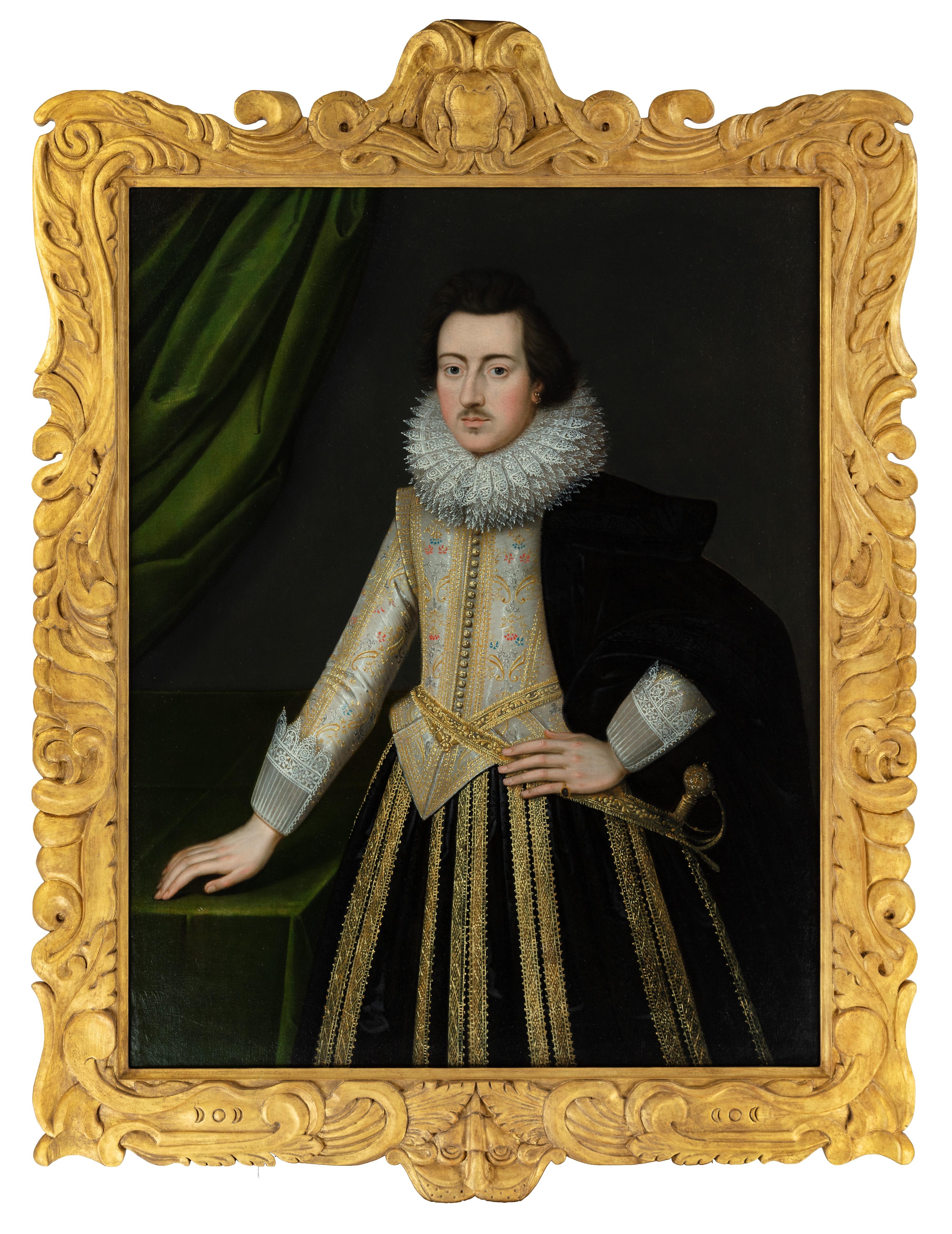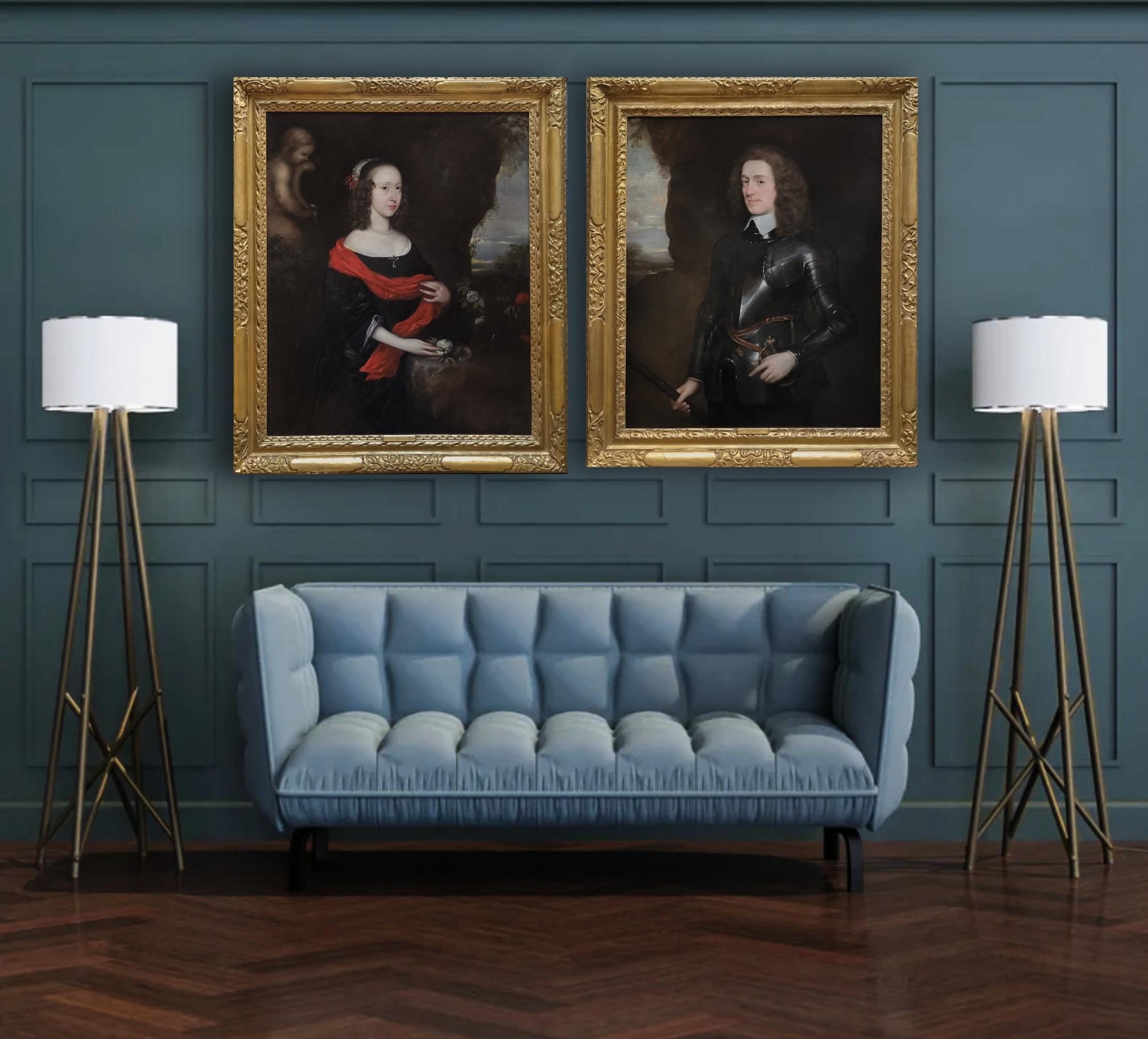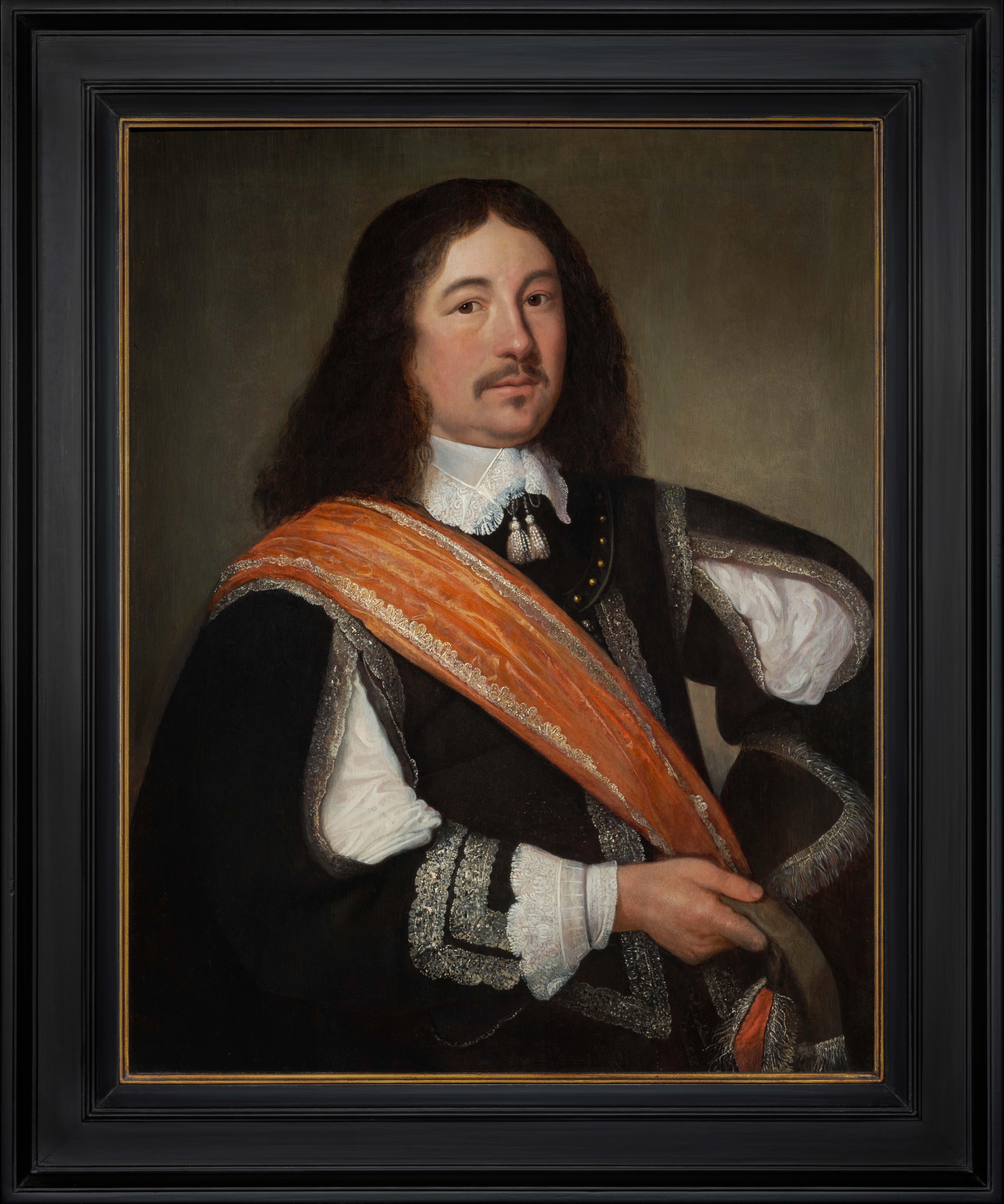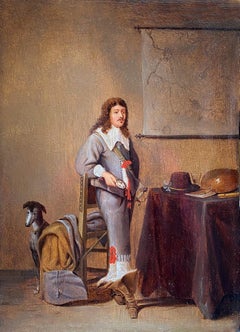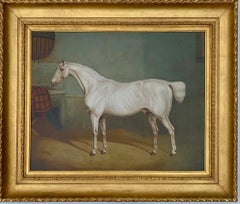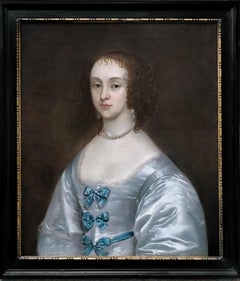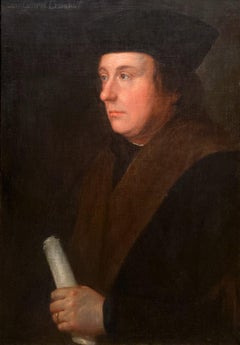
Portrait of Thomas Cromwell 1st Earl of Essex, English School 17th Century
Want more images or videos?
Request additional images or videos from the seller
1 of 7
UnknownPortrait of Thomas Cromwell 1st Earl of Essex, English School 17th Century
About the Item
- Dimensions:Height: 24 in (60.96 cm)Width: 20 in (50.8 cm)
- More Editions & Sizes:24 x 20Price: $10,161
- Medium:
- Movement & Style:
- Period:
- Condition:
- Gallery Location:London, GB
- Reference Number:1stDibs: LU5246110762
About the Seller
5.0
Gold Seller
These expertly vetted sellers are highly rated and consistently exceed customer expectations.
Established in 2007
1stDibs seller since 2014
66 sales on 1stDibs
Typical response time: 4 hours
More From This SellerView All
- Portrait of a Man, 17th Century Dutch Oil on Panel PortraitBy Cornelis DusartLocated in London, GBCircle of Cornelis Dusart Dutch 1660 - 1704 Portrait of a Man Oil on panel Image size: 7¾ x 5¼ inches Giltwood frame Cornelis Dusart Cornelis ...Category
17th Century Old Masters Portrait Paintings
MaterialsOil, Panel
- Portrait of a Young Man - 17th Century Portrait in OilBy Pieter Harmensz VerelstLocated in London, GBCircle of Pieter Harmensz Verelst 1618 - 1678 Portrait of a Young Man Oil on oak panel Image size: 7 ½ x 5 ¾ inches Dutch ripple frameCategory
18th Century and Earlier Old Masters Portrait Paintings
MaterialsPanel, Oil
- Soldier in an Interior, Early 17th Century Dutch OilLocated in London, GBPieter Symonsz Potter Dutch 1600 - 1652 Soldier in an Interior Oil on oak panel, red seal to reverse Image size: 15 x 10 3/4 inches Dutch Ebonised frame Bathed in a well lit roo...Category
Early 17th Century Old Masters Portrait Paintings
MaterialsOil, Board
- Portrait of an Officer, Cornelius Johnson, 17th Century Old MastersBy Cornelius JohnsonLocated in London, GBCircle of Cornelius Johnson Circa 1620’s Portrait of a Officer Oil on canvas Image size: 28 x 24 inches Period style hand made frame Provenance Private European Estate This striking portrait dates to around 1620, as you can see from the images of the sash the detail is very high. The sash is decorated with gold thread and would have cost a small fortune at the time. Sashes were originally developed for a military function (making officers more visible for their men during combat), but soon became a primarily male fashion...Category
Early 17th Century Old Masters Portrait Paintings
MaterialsOil
- Portrait of William Herbert, 3rd Earl of Pembroke, Early 17th Century PortraitLocated in London, GBEnglish School, (circa 1600) Portrait of William Herbert, 3rd Earl of Pembroke Oil on panel, oval Image size: 29¼ x 23⅞ inches Painted wooden frame Provenance: 176, Collection of Francis Greville, 1st Earl of Warwick. The Trustees of the Lord Brooks’ Settlement, (removed from Warwick Castle). Sotheby’s, London, 22nd March 1968, lot 81. Painted onto wooden panel, this portrait shows a dark haired gentleman in profile sporting an open white shirt. On top of this garments is a richly detailed black cloak, decorated with gold thread and lined with a sumptuous crimson lining. With the red silk inside it’s all very expensive and would fall under sumptuary laws – so this is a nobleman of high degree. It’s melancholic air conforms to the contemporary popularity of this very human condition, evident in fashionable poetry and music of the period. In comparison to our own modern prejudices, melancholy was associated with creativity in this period. This portrait appeared in the earliest described list of pictures of Warwick castle dating to 1762. Compiled by collector and antiquary Sir William Musgrave ‘taken from the information of Lord & Lady Warwick’ (Add. MSS, 5726 fol. 3) is described; ‘8. Earl of Essex – an original by Zuccharo – seen in profile with black hair. Holding a black robe across his breast with his right hand.’ As tempting as it is to imagine that this is a portrait of Robert Devereux, the 2nd Earl Essex, we might take this with a pinch of salt. Its identification with this romantic and fatal Elizabethan might well have been an attempt to add romance to Warwick Castle’s walls. It doesn’t correspond all that well with Essex’s portraits around 1600 after his return from Cadiz. Notably, this picture was presumably hung not too far away from the castle’s two portraits of Queen Elizabeth I. The first, and undoubtedly the best, being the exquisite coronation portrait that was sold by Lord Brooke in the late 1970s and now hangs in the National Portrait Gallery. The second, described as being ‘a copy from the original at Ld Hydes’, has yet to resurface. The portrait eventually ended up being hung in the State Bedroom of Warwick Castle. Archival documents present one other interesting candidate. The Greville family’s earliest inventory of paintings, made in 1630 at their home Brooke House in Holborn, London, describes five portraits of identified figures. All five belonged to the courtier, politician and poet Sir Fulke Greville (1554-1628), 1st Baron Brooke, and were hung in the ‘Gallerie’ of Brooke House behind yellow curtains. One of them was described as being of ‘Lord of Pembrooke’, which is likely to have been William Herbert (1580-1630), 3rd Earl of Pembroke. William was the eldest son of Greville’s best friend’s sister Mary Sidney, and was brought up in the particularly literary and poetically orientated household which his mother had supported. Notably, the 3rd Earl was one of the figures that Shakespeare’s first folio was dedicated to in 1623. The melancholic air to the portrait corresponds to William’s own pretensions as a learned and poetic figure. The richness of the robe in the painting, sporting golden thread and a spotted black fabric, is indicative of wealth beyond that of a simple poet or actor. The portrait’s dating to around the year 1600 might have coincided with William’s father death and his own rise to the Pembroke Earldom. This period of his life too was imbued with personal sadness, as an illicit affair with a Mary Fitton had resulted in a pregnancy and eventual banishment by Elizabeth I to Wilton after a short spell in Fleet Prison. His illegitimate son died shortly after being born. Despite being a close follower of the Earl of Essex, William had side-stepped supporting Devereux in the fatal uprising against the Queen and eventually regained favour at the court of the next monarch James I. His linen shirt is edged with a delicate border of lace and his black cloak is lined on the inside with sumptuous scarlet and richly decorated on the outside with gold braid and a pattern of embroidered black spots. Despite the richness of his clothes, William Herbert has been presented in a dishevelled state of semi-undress, his shirt unlaced far down his chest with the ties lying limply over his hand, indicating that he is in a state of distracted detachment. It has been suggested that the fashion for melancholy was rooted in an increase in self-consciousness and introspective reflection during the late 16th and early 17th centuries. In contemporary literature melancholy was said to be caused by a plenitude of the melancholy humor, one of the four vital humors, which were thought to regulate the functions of the body. An abundance of the melancholia humor was associated with a heightened creativity and intellectual ability and hence melancholy was linked to the notion of genius, as reflected in the work of the Oxford scholar Robert Burton, who in his work ‘The Anatomy of Melancholy’, described the Malcontent as ‘of all others [the]… most witty, [who] causeth many times divine ravishment, and a kind of enthusiamus… which stirreth them up to be excellent Philosophers, Poets and Prophets.’ (R. Burton, The Anatomy of Melancholy, London, 1621 in R. Strong, ‘Elizabethan Malady: Melancholy in Elizabethan and Jacobean Portraits’, Apollo, LXXIX, 1964). Melancholy was viewed as a highly fashionable affliction under Elizabeth I, and her successor James I, and a dejected demeanour was adopted by wealthy young men, often presenting themselves as scholars or despondent lovers, as reflected in the portraiture and literature from this period. Although the sitter in this portrait is, as yet, unidentified, it seems probable that he was a nobleman with literary or artistic ambitions, following in the same vain as such famous figures as the aristocratic poet and dramatist, Edward de Vere...Category
Early 17th Century Old Masters Portrait Paintings
MaterialsWood Panel, Oil
- Portrait of a Lady, 17th Century Flemish Oil Old MastersBy Jacob HuysmansLocated in London, GBJacob Huysmans Flemish 1633 - 1696 Portrait of a Lady Oil on canvas Image size: 49 x 40 ¼ inches Gilt frame Huysmans was born in Antwerp and came to England during the reign of Charles II where he became one of the fashionable painters of the court.. The diarist Samual Pepys noted the artist as capable of a more exact likeness than Lely. Certainly the diarist records that by August 1664 in the circle of Queen Catherine...Category
17th Century Old Masters Portrait Paintings
MaterialsCanvas, Oil, Acrylic
You May Also LikeView All
- 19th century English portrait of a White/grey hunter in a stableBy Charles TowneLocated in Woodbury, CTEnglish 19th century portrait of a White / Grey hunter in a stable. Charles Towne was born in Wigan in 1763. He was trained as a coach painter, and by ...Category
1820s Old Masters Animal Paintings
MaterialsOil, Canvas
$19,600 Sale Price20% OffFree Shipping - Portrait of a Lady, Katherine St Aubyn, Godolphin, Cornelius Johnson, Oil canvasBy Cornelius JohnsonLocated in London, GBTitan Fine Art are pleased to present this charming bust-length portrait, which is a good example of the style of portrait painted in England in the second quarter of the seventeenth century. The attire consists of the finest silks, and the full billowing sleeves, bows, and hairstyle help in dating this portrait to circa 1637. The accessory par excellence – pearls – are worn as a necklace and were a very popular accessory. The artist makes no attempt to obey the rules of Baroque and instead sensitively depicts in complete honesty his sitter against a plain wall, and without distracting backdrops and flowing draperies – this work is very redolent of the sumptuous half-length female portraits that Cornelius Johnson...Category
17th Century Old Masters Portrait Paintings
MaterialsCanvas, Cotton Canvas, Oil
- Portrait Of Thomas Smythe (1514-1577) School of Hans HOLBEIN (1497-1543)By Hans HolbeinLocated in Blackwater, GBPortrait Of Thomas Smythe (1514-1577), 16th Century School of Hans HOLBEIN (1497-1543) Fine huge 16th Century English Old Master portrait of Sir Thomas...Category
16th Century Old Masters Portrait Paintings
MaterialsOil
- William Wissing (follower) 19th Century Portrait Queen Mary IILocated in York, GBA 19th century oil on canvas, portrait of a young woman.This portrait is believed to be of Queen Mary II taken from an engraving of the painting, Halswell Park Sale, 1948, lot no.1323, Housed in a decorative gilt frame.Size overall being 70 x 86 cm high (27.5 x 33¾ inches approx) size of painting 54 x 68 cm (21 x 26 inches approx) To the rear of the portrait is a newspaper cutting of the engraving ,also a typed note regarding the provenance of the painting (see photo) Condition overall is very good, the Canvas has been relined, under UV there are areas of overpaint to bosom.Frame overall very good some minor self coloured losses Mary II (30 April 1662 – 28 December 1694) Mary, born at St James's Palace in London on 30 April 1662,eldest daughter of James, Duke of York (the future James II & VII) , and his first wife, Anne Hyde. Mary's uncle was King Charles II, her maternal grandfather, Edward Hyde, 1st Earl of Clarendon, served for a lengthy period as Charles's chief adviser. Mary married William of Orange. Willem Wissing, known in England as William Wissing...Category
19th Century Old Masters Portrait Paintings
MaterialsOil
- Nathaniel Hone, portrait of "flora" roman goddess, 18th centuryBy Nathaniel Hone the ElderLocated in York, GBI have great pleasure in offering for sale this beautiful portrait, by Nathaniel Hone, the elder. 18th century. The painting is of Ann Anderson, wife...Category
18th Century Old Masters Portrait Paintings
MaterialsOil
$10,414 Sale Price42% OffFree Shipping - 19th Century Portrait, Child At Play , Attributed To Henry Tanworth WellsLocated in York, GB19th century portrait, child at play ,Attributed to Henry Tanworth Wells A beautiful oval portrait of a young child at play, attributed to the portrait painter Henry Tanworth Wells. finely executed, this oil on canvas is in excellent condition. Housed in a period frame. The size overall is 79 cm x 62 cm whilst the painting is 56 cm x 46 cm Henry Tanworth Wells [1828-1903] Henry Tanworth Wells RA was an English miniature and portrait painter. He was a member of the Pre-Raphaelite circle though he painted in the academic style. His most popular painting...Category
19th Century Old Masters Portrait Paintings
MaterialsOil
$4,885 Sale Price40% OffFree Shipping
Recently Viewed
View AllMore Ways To Browse
Portraits 20 Century
R Thomas
Antique Reproduction Paintings
Antique Portrait Miniature
Thomas King
Framed Miniature Portraits
16th Century English
16th Century Antiques
Fall Of Rome
Essex Antique
Antique Portrait Miniature Painting Paintings
Antique Portrait Miniature Paintings
English King Set
Antique Miniature Portrait Painting
Fig Oil Painting
Thomas Earl
Old Masters Reproduction
Miniature Train


